Disclosure: My dog blog is supported by dog parents just like you. I only recommend products that I would use on my dogs. All opinions expressed here are my own. I sometimes earn a small affiliate commission, at no extra cost to you, when you click through the affiliate link and purchase something. You can read more about my affiliate policy here.
You probably already know how beneficial sniffing is for the mental health of your doggo. However, did you know dogs need to sniff for their emotional health, too?
The terms mental health and emotional health seem to be used interchangeably when looking at overall well-being. However, they are distinctly different, yet you can’t have one without the other.
The two actually perform two different tasks by working together. Mental health attributes to the processing of information. Yet, emotional health attributes to expressing feelings from the information you just processed.
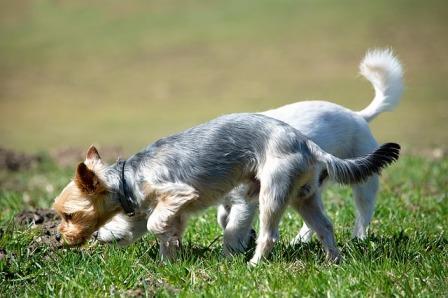
Therefore, dogs need to sniff for both their mental and emotional health.
A study conducted in 2019, suggests that providing dogs with many sniffing opportunities makes them feel more optimistic. The study by Charlotte Duranton and Alexandra Horowitz appears in the Applied Animal Behavior Science Journal.
The dog behaviorists tested the effect of an olfactory-based activity on the emotional states of pet dogs. As a result, they conclude that dogs are optimistic when using their olfaction through regular nose work activity.
According to the researchers, allowing dogs more “foraging” time, their welfare is improved.
So, I don’t know about you, but when I’m optimistic, I’m super happy! Optimism is uniquely related to positive affect. Similarly, this could mean that optimists are generally happier with their lives than pessimists.
That is to say, since optimism is the result of the study, then by all means, dogs need to sniff. Likewise, sniffing makes dogs happy.
Dogs Need to Sniff for Enjoyment
Dogs literally enjoy sniffing! Most importantly, dogs are happy when they sniff. As dog parents, we need to allow our doggos to sniff, at will. In addition, we can provide activities that let them sniff as a reward.
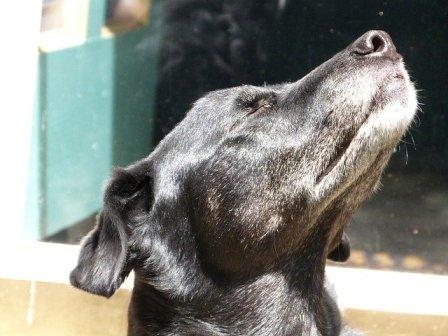
Why does sniffing make our doggos happy? Firstly, taking in scents releases hormones that affect them in a calming, content way. Scent travels directly to the limbic system of a dog’s brain.
Furthermore, the limbic system is the part of the brain that deals with emotional responses. Sniffing scents activates this area of the brain, indicating our dogs could be driven by their emotions.
So, your dog is happier when you allow them to indulge in many sniffing opportunities. They feel content when all of those feel-good hormones are released from doing so.
In addition, dogs need to sniff for a bonding opportunity with you. We now know that sniffing is something our dogs want to do. Therefore, when we allow them to do something they want to do, it creates a special bond.
It really doesn’t matter what the sniffing opportunity is, they will love you more for it.
3 Sniffing Opportunities to Incorporate
You can keep your dog’s sense of smell in shape by providing sniffing enrichment opportunities in various ways. So, let’s take a look at three ways that can really enrich the emotional health of our dogs.
1. Smell Games
Scent-based games are a fun way to challenge your dog’s sense of smell. In addition, they are easy enough, the youngest family members can participate. Furthermore, learning a new, useful skill is making your doggo happy.
Creating a scent trail is a perfect way to engage your dog in exercising his or her nose. Plus, it’s a game your dog can feel in control. Similarly, you can hide a treat and let your dog go on a hunt for it.
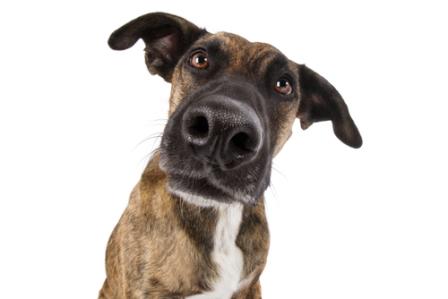
Moreover, you can place a treat in one of your hands, then put your hands behind your back. While behind your back, switch the treat to your other hand. After that, hold out your closed hands, and let your dog sniff. Make sure they nudge which hand with their nose or paw before revealing what is there.
Another fun smell game is the cups game. Your dog can use their eyes and ears for this game. Make sure your cups are the same size. Then, place them upside down on a flat surface. After that, place a treat under one. Shuffle, the cups around. Next, let your dog figure out which cup contains the treat. You can do this by letting them knock it over or nose it, and wait for you to reveal.
One of my favorite games is playing hide and seek with my doggo. Now, of course, I do all of the hiding. Although, I have seen YouTube videos where dogs hide from their parents and then jump out. Nevertheless, my dogs have never done this. But, they sure do like sniffing me out of hiding. Only offering treats some of the time makes the game more exciting for them.
2. Nose Work Classes
A nose work class is worth considering to provide a more structured learning environment for your doggo. In addition, a nose work class can hone your dog’s skill for sniffing. Furthermore, your bond with your dog will strengthen working together.
In a nose work class, your doggo will be taught to identify a specific scent. Then, your dog will learn how to find it and alert you as to where it is. Nose work training is similar to drug detection training for dogs.
You can check in your local area for a nose work class to take your dog to. In addition, you can do a quick google search and find many online courses to participate in.
3. Sniffaris
Hopefully, you take your doggo on walks to benefit physical health for the both of you. However, it’s beneficial for your dog to work in some sensory stimulating walks called sniffaris.
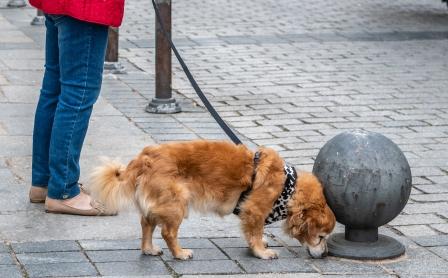
You will just need to divide your outdoor walks with your dog between exercising and sniffing. In fact, out of these three enrichment activities, this one gets overlooked.
Yet, it can be one of the easiest sniffing activities you can incorporate into your dog’s life. Just be aware of when your dog wants to sniff something while out walking. Slow down for a few moments, and allow them to sniff.
A good 15-minute sniffari will satisfy their need for mental and emotional enrichment. In addition, you can take your doggo on new routes to give them a deeper enrichment.
“Not allowing dogs to sniff can be seen as a form of sensory deprivation that robs them of vital information they need to navigate their surroundings.”
Marc Bekoff, Ph.D., professor emeritus of ecology and evolutionary biology at the University of Colorado, Boulder
It might be in your best interest to hurry your dog along during a walk. However, it is not in your dog’s best interest. They truly aren’t trying to annoy you or take a break.
“Dogs read about the world through their noses, and they write their messages, at least to other dogs, in their urine.”
Stanley Coren, dog book author, The Intelligence of Dogs
So, stop and let your dog read the news of the neighborhood through “pee” mail. And, for sure, let them leave their own words to be read by others.
A Dog’s Amazing Nose and Sense of Smell
We humans are mostly all about visual stimulation, but our doggos are all about the smells. In fact, our dog’s sense of smell is 10,000 to 100,000 times better than ours.
“Dogs have up to 300 million olfactory receptors in their noses, versus only about 6 million for us. And the part of their brain dedicated to interpreting these is about 40 times larger than ours.”
Michael T. Nappier, DVM, DABVP, of the Virginia Maryland College of Veterinary Medicine
In addition, a dog’s nose can perform two tasks at the same time. Firstly, their nose is used for smell, and secondly, for respiration. A small area of tissue in a dog’s nostril allows the performance of both functions simultaneously.
On the other hand, we exhale the same way as we inhale. In fact, we don’t smell anything when we exhale.
So, really, do we understand, just how powerful our dog’s sense of smell is? Let’s look at a couple of different analogies to try to grasp just how powerful!
“If you make the analogy to vision, what you and I can see at a third of a mile, a dog could see more than 3,000 miles away and still see as well.”
James Walker, former director of the Sensory Research Institute at Florida State University
“A dog’s sense of smell is so sensitive that they can detect the equivalent of a 1/2 a teaspoon of sugar in an Olympic-sized swimming pool.”
Michael T. Nappier, DVM, DABVP, of the Virginia Maryland College of Veterinary Medicine
Hmmm…
Wow! That’s powerful!
To Sum Up
So, when you go walking with your doggo, be patient and let them read their “pee” mail. Remember, dogs need to sniff for their emotional well-being. It’s good for their mood and after all, you want a happy dog, right?
Sniffing truly is a major part of your dog’s feelings of happiness and contentment. Most importantly, the more sniffing opportunities you give him or her, the more they learn about the world. And, the more they learn about the world, the happier they will feel.
What sniffing opportunities do you give your doggo? We would love to read about them in the comments below.
You might enjoy the following posts from our blog:
If you want to save this post, you can use one of the following images to pin to Pinterest.
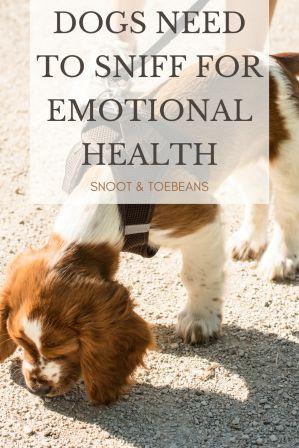
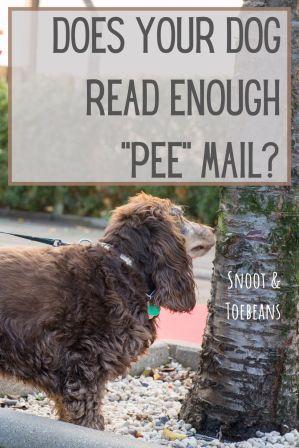
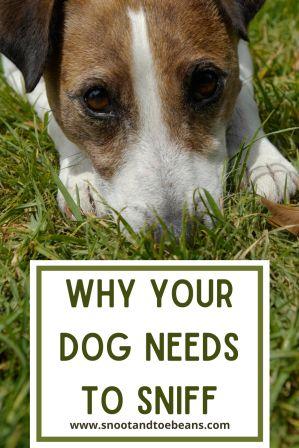
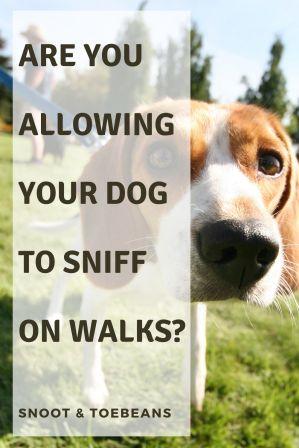

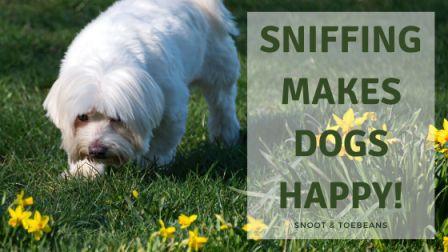
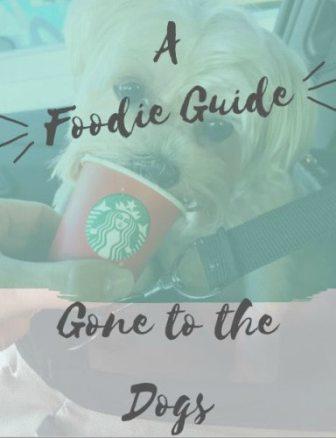
I don’t know much about dog behavior, but one thing that always intrigued me was the sniffing of everything… even sniffing people!
But now I know! Wow! I am learning so much from your articles! Thank you!
Hi! Nidia. I am so happy you are learning so much from the articles. Yep! Dogs love to sniff everything including us people! Even in inappropriate places. LOL!